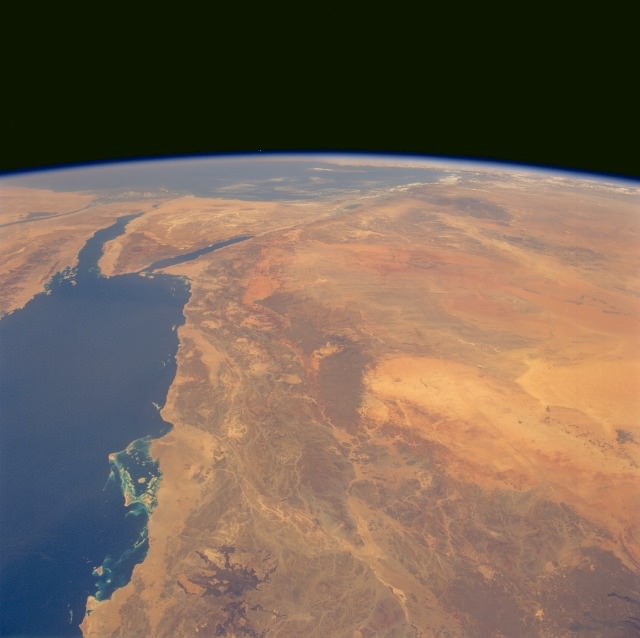Lazy sweeper
Mooooo Cra Chirp Fssss Miaouw is a game of words
Seen from space, the majority of the Earth’s surface is covered by oceans – that makes up 71% of the surface of the Earth, with the remaining 29% for land. But what percentage of the Earth’s land surface is desert? Deserts actually make up 33%, or 1/3rd of the land’s surface area.
The answer to the pool question is unknown. It is more of a general players impressions of what is going on with Deserts in the maps..

 www.universetoday.com
www.universetoday.com

Desertification affects about 30% also of all dryland, with a rapid increase in Desertification rate, driven by anthropogenic enlargement, at 30-35% the historical rate.
Drylands cover 41% of the earth’s land surface and include 45% of the world’s agricultural land. These regions are among the most vulnerable ecosystems to anthropogenic climate and land use change and are under threat of desertification. Understanding the roles of anthropogenic climate change, which includes the CO2 fertilization effect, and land use in driving desertification is essential for effective policy responses but remains poorly quantified with methodological differences resulting in large variations in attribution. Here, we perform the first observation-based attribution study of desertification that accounts for climate change, climate variability, CO2 fertilization as well as both the gradual and rapid ecosystem changes caused by land use. We found that, between 1982 and 2015, 6% of the world’s drylands underwent desertification driven by unsustainable land use practices compounded by anthropogenic climate change. Despite an average global greening, anthropogenic climate change has degraded 12.6% (5.43 million km2) of drylands, contributing to desertification and affecting 213 million people, 93% of who live in developing economies.
About 20% of the Earth's land is covered with mountains, including well-known ranges such as the Himalayas, the Rocky Mountains, the Eurasian Alps, and the Andes in South America
considerable amounts of land are ice sheets 10% not including the equally large area of land under permafrost > see tundra
So summed together, about 70% of world land is either Desert or Dryland. 20% Mountains and plateu, 10% Ice and permafrost.

Tundra covers approximately 10% of Earth's surface, primarily found in cold regions north of the Arctic Circle and above the timberline on high mountains.24 Temperate grasslands, savannas, and shrublands cover about 13% of the Earth's land surface.
Therefore, tundra and temperate ecosystems together account for roughly 23% of the Earth's land surface
At last...
Tropical rainforests cover approximately 6% of the Earth's land surface, but some sources indicate that tropical forests, which include both rainforests and other tropical forest types, cover around 13% of the Earth's land area.16 According to the Food and Agriculture Organization (FAO), tropical forests account for about 20-25% of the world's total forest cover, which is approximately 6-7% of the Earth's land surface
The answer to the pool question is unknown. It is more of a general players impressions of what is going on with Deserts in the maps..

What Percentage of the Earth's Land Surface is Desert?
[/caption] Seen from space, the majority of the Earth’s surface is covered by oceans – that makes up 71% of the surface of the Earth, with the remaining 29% for land. But what percentage of the Earth’s land surface is desert? Deserts actually make up 33%, or 1/3rd of the land’s surface area...
 www.universetoday.com
www.universetoday.com
Desertification affects about 30% also of all dryland, with a rapid increase in Desertification rate, driven by anthropogenic enlargement, at 30-35% the historical rate.
Drylands cover 41% of the earth’s land surface and include 45% of the world’s agricultural land. These regions are among the most vulnerable ecosystems to anthropogenic climate and land use change and are under threat of desertification. Understanding the roles of anthropogenic climate change, which includes the CO2 fertilization effect, and land use in driving desertification is essential for effective policy responses but remains poorly quantified with methodological differences resulting in large variations in attribution. Here, we perform the first observation-based attribution study of desertification that accounts for climate change, climate variability, CO2 fertilization as well as both the gradual and rapid ecosystem changes caused by land use. We found that, between 1982 and 2015, 6% of the world’s drylands underwent desertification driven by unsustainable land use practices compounded by anthropogenic climate change. Despite an average global greening, anthropogenic climate change has degraded 12.6% (5.43 million km2) of drylands, contributing to desertification and affecting 213 million people, 93% of who live in developing economies.
About 20% of the Earth's land is covered with mountains, including well-known ranges such as the Himalayas, the Rocky Mountains, the Eurasian Alps, and the Andes in South America
considerable amounts of land are ice sheets 10% not including the equally large area of land under permafrost > see tundra
So summed together, about 70% of world land is either Desert or Dryland. 20% Mountains and plateu, 10% Ice and permafrost.
Tundra covers approximately 10% of Earth's surface, primarily found in cold regions north of the Arctic Circle and above the timberline on high mountains.24 Temperate grasslands, savannas, and shrublands cover about 13% of the Earth's land surface.
Therefore, tundra and temperate ecosystems together account for roughly 23% of the Earth's land surface
At last...
Tropical rainforests cover approximately 6% of the Earth's land surface, but some sources indicate that tropical forests, which include both rainforests and other tropical forest types, cover around 13% of the Earth's land area.16 According to the Food and Agriculture Organization (FAO), tropical forests account for about 20-25% of the world's total forest cover, which is approximately 6-7% of the Earth's land surface

